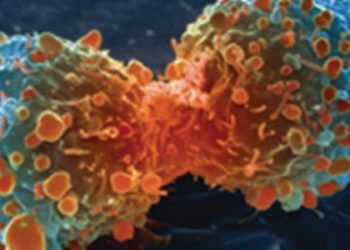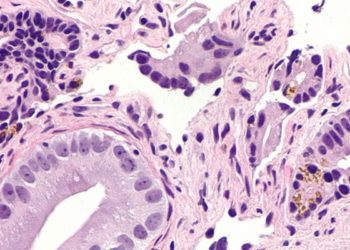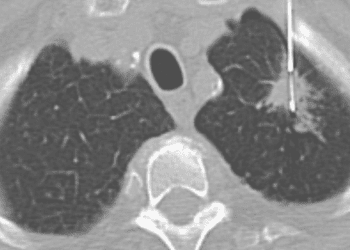AstraZeneca’s Tagrisso and chemotherapy pairing have been approved in Canada for treatment in locally advanced or metastatic non-small cell lung cancer.
- Tagrisso is the first-line therapy for patients whose lung cancer tumors have EGFR exon 19 deletions or exon 21 substitution mutations.
- A phase 3 trial showed that Tagrisso and chemotherapy together cut the risk of disease progression or death by 38% compared to Tagrisso alone.
The Latest
Following the results of AstraZeneca’s FLAURA2 trial, Canadian health authorities have approved the combination of Tagrisso and chemotherapy in patients with locally advanced or metastatic non-small cell lung cancer whose tumors have EGFR exon 19 deletion or exon 21 substitution mutations. The FLAURA 2 trial compared Tagrisso plus chemotherapy to Tagrisso monotherapy to investigate the probability of progression-free survival and overall survival. The results show that at the 24-month mark following the intervention, Tagrisso plus chemotherapy had a 57% probability of progression-free survival compared to 41% for monotherapy. While not yet complete, interim overall survival results favored Tagrisso plus chemotherapy with a hazard ratio of 0.75 with consistent results across all prespecified subgroups.
Physician’s Perspective
Non-small cell lung cancer (NSCLC) is one of two main types of lung cancer and makes up about 85% of all lung cancer cases. Approximately 15% of NSCLC patients in the US and Europe and 40% of patients in Asia have a mutation in the EGFR gene causing NSCLC. When NSCLC metastasizes, it most commonly spreads to the brain, bones, liver, skin, lymph nodes, or adrenal glands. In the case that NSCLC does spread to the brain, it should be noted that Tagrisso can cross the blood-brain barrier as noted in preclinical models and a study of healthy humans. When combined with chemotherapy, physicians and patients should monitor for the adverse effects of stomatitis, rash, and nail toxicity in addition to the clinically expected effects of chemotherapy.
Molecular Target of Therapy
In normal cells, epidermal growth factor receptors (EGFR) promote cell proliferation but in cancer cells, it has been identified as a key driver of tumor growth. Two mutations in EGFRs account for 85% of all EGFR mutations. The two mutations are the exon 19 deletion and the exon 21 mutation L858R. Tagrisso is a third-generation epidermal growth factor receptor tyrosine kinase inhibitor that irreversibly and selectively binds to the Exon 19 deletion and Exon 21 mutation to inhibit the growth of the tumor.
Company History
AstraZeneca is a large global pharmaceutical company headquartered in Cambridge, England. The company was formed in 1999 following a merger with Sweden’s Astra AB and Britain’s Zeneca Group. The company has a focus on producing pharmaceuticals for cancer, cardiovascular disease, metabolic disease, gastrointestinal ailments, infectious diseases, respiratory problems, and inflammation. Besides Tagrisso, some of its best-known products include the inhaler Symbicort for asthma and Forxiga for type 2 diabetes.
Further Reading: https://www.tagrissohcp.com/about.html
©2024 2 Minute Medicine, Inc. All rights reserved. No works may be reproduced without expressed written consent from 2 Minute Medicine, Inc. Inquire about licensing here. No article should be construed as medical advice and is not intended as such by the authors or by 2 Minute Medicine, Inc.






